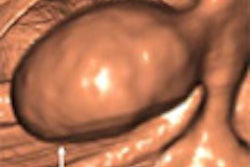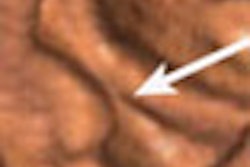AGRA - On Saturday the scientific program of the 58th annual congress of the Indian Radiological and Imaging Association (IRIA) got under way in scenic Agra, the home of the Taj Mahal, and it soon became apparent that Dr Shilpa Shanke's presentation, "High-Resolution MR Imaging of Carotid Plaques," was easily the most impressive. Appropriately, her paper was selected as the "Onco-Imaging Innovative Research Paper."
Reinforcing the rationale behind the selection of this paper from among the many, Dr I. Kandaswamy, former IRIA president, commented that the presentation on MR imaging of carotid plaques by Shanke was undoubtedly the best that morning. Surprisingly, she is not some high-ranking radiologist from a premier institution, but a postgraduate student of radiology from Mumbai University.
"Decision making in luminal stenoid cases is largely dependent on CT and MRI," Shanke stated. "Seventy-five percent of the events follow from moderately stenoid cases." It is, however, found that positive remodeling -- wrong estimation of disease burden -- can be traced to the traditional method of using 0 degree, 45 degrees, and 90 degrees as the angle of scanning. This is so because 20% to 50% of cases exhibited oval lumen. "The oval shape calls for a very different approach," Shanke says.
"The lesser efficacy of CEA/stenting gives an urgent requirement to shift from quantitative to qualitative diagnosis," she adds. Ultrasonography provided the characterization, but high-resolution MR proved better in her case study, due to the excellence of the images and soft-tissue contrast. Shanke used a three-end, dual-phased multispectral imaging system.
A few drawbacks remain in plaque analogy using this procedure, such as the inability to differentiate between core and cap. Shanke, who has identified the vulnerable age group for carotid stenosis as the over-60 category, was happy to note that the use of high-resolution MR meant that defects were detected during the life of the patient. As for the confusion with cap on TOF and lumen in SE, she pointed out that "This has been overcome by the use of multispectral MR."
The awareness and acceptance levels of high-resolution MR for imaging carotid arteries were low among radiologists, Shanke concluded. She referred to the lack of availability of the procedure to patients as a radiological tragedy. But, she added, the road ahead is predictive and prophetic, and in favor of high-resolution MR.
By Ravi Damodaran
AuntMinnieIndia.com contributing writer
January 24, 2005
Copyright © 2005 AuntMinnie.com



















